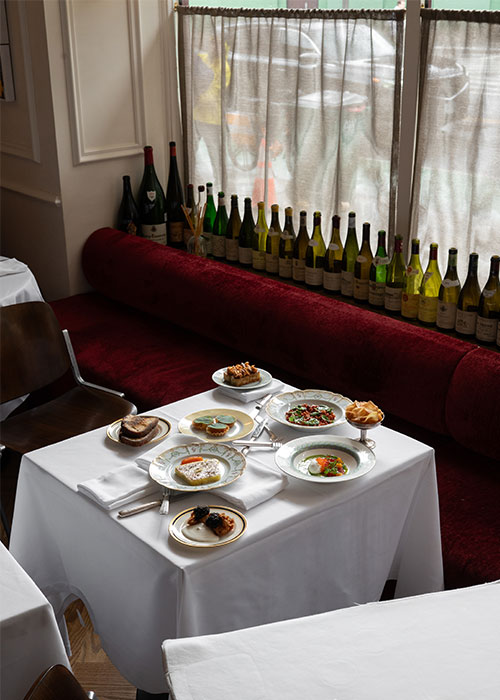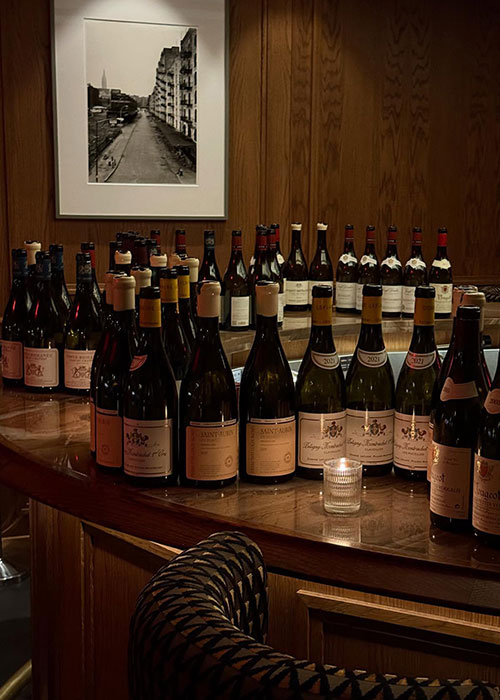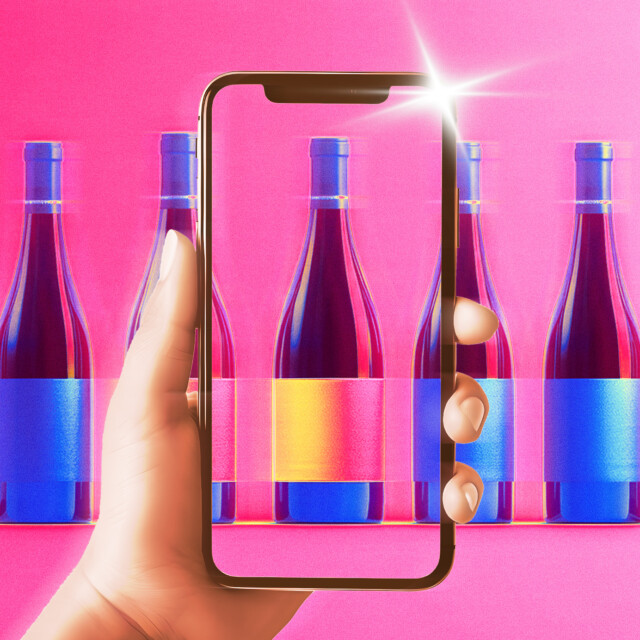Flip through the Instagram stories of Lei, a buzzy wine bar in New York City’s Chinatown, on any given night, and a parade of bottles will march across your screen. At the end of every service, the bar celebrates clocking out by posting a video that pans across a lineup of empty wines that were enjoyed in the bar that night.
I recently watched a video that chronicled 36 bottles sold on a Monday, featuring an uncorked bottle of premier cru Burgundy followed by two different vintages of grower Champagne from Thibault Tassin. After I paused for a quick Google search to identify an open bottle of Japanese sparkling wine by Coco Farm, the video shifted to show a Loire Valley Chenin Blanc alongside an acid-driven Aligoté.
More and more sommeliers are opting to highlight their work by sharing posts like this on social media. The literal thirst traps are designed to show off the bottles they sell or add to their wine lists. For some wine pros, it’s a way to educate guests about what’s on the ever-changing menu, connect with other somms, and celebrate remarkable purchases — but others see it as nothing more than a tacky flex when sommeliers only post their most expensive sales.
So can these posts help wine bars expand their reach? Or does it only make an industry already accused of gatekeeping seem even more pretentious?
Showing Range
Lei’s videos feel like a world tour in a few dozen bottles — and wine director Matt Turner says that’s exactly the point. He started posting about the bar’s sales to chronicle bottles the team gets excited about opening. The lineup is always interesting, especially since the Asian-American wine bar sees a wider range of styles each night than your average spot hawking high-end Burgundy and Champagne.
“Part of the joy of a wine bar with a global and varied wine list like ours is opening really different things in a wide range of scenarios,” he says. “For us, it is less about highlighting the sale and more about commemorating the experiences that come from all the different wines we love to open and share.”
For curious onlookers peeping Lei’s Instagram stories each night, these videos might seem like an invitation to come in and order a bottle. By paying equal screen time to a $60 aromatic white from Greece and a $350 Volnay, it conveys that all are welcome to take part in exploring the world of wine, even if you’re not necessarily a high roller.
The social media trend is an extension of what many wine bars and restaurants have been doing for decades: displaying “trophy bottles,” or the most expensive and hard-to-find wines they’ve sold throughout the space. At NYC’s Le Chêne, a collection of empty vessels from Domaine de la Romanée-Conti, Château Mouton Rothschild, and other exclusive producers is lined up along the restaurant’s front windowsill, creating an assemblage that easily would value in the five-figure range, at least, if all the bottles were still full.

Ronan Duchêne Le May, co-owner of Le Chêne, says the team started lining up its big-ticket bottles when the restaurant opened in May. Each night as service is wrapping up, the team begins arranging empties on vacant tables to prepare for its daily social media post. Duchêne Le May sees it as a way to honor the shared experience of the diners.
“All the bottles are lined up as a big family, in a way,” he says. “It’s like everybody was part of the same table because they were all in the restaurant at one moment of the night.”
Staying in the Loop
Beyond that romantic ideal, Duchêne Le May insists the posts provide a service to guests, too. He buys wine every day for the restaurant, so it’s nearly impossible to offer an up-to-date list on the website. Posting on social media gives visitors a sense of what to expect from the beverage program or spotlight new arrivals from particularly exciting producers.
“Social media is the quickest way to communicate because my regulars follow me and so do other wine professionals.”
Tira Johnson, beverage director for the We All Gotta Eat Group, also has guests in mind when she posts about newcomers to the lists at Sushi Noz and Chez Fifi. “Ever since I started buying, I have had fun posting about what’s hitting the list,” she says. “Sometimes when you get those wine deliveries, it feels like Christmas morning.”
Neighborhood regulars and wine collectors who follow her on Instagram will respond to ask questions about the bottles or put something on hold for an upcoming reservation. Other guests benefit from the posts because they might not recognize a wine by name alone, but they may screenshot something they’re interested in and show her the photo in the restaurant.
Most of the time it’s the rare and expensive bottles that make it on a story or feed post, but Johnson adds that social media has also helped her learn about more under-the-radar producers and connect with distributors who can get those bottles into her hands.
Oversharing
While some sommeliers have become de facto influencers, others debate whether they should be hitting the post button more often. “I personally don’t post a ton about wine on social media, but honestly feel like I should be doing so more,” says Stella Martindale, the wine director at The Musket Room. “Social media is the quickest way to communicate because my regulars follow me and so do other wine professionals.”
Frank Kinyon, the beverage and service director at a.kitchen+bar in Philadelphia, is conflicted on the matter. While he acknowledges there’s an opportunity to connect with other pros and guests by posting about wine on social media, he says most posts about wine just feel like a not-so-subtle brag.

“What I end up seeing the most on social media is people posting their wine unicorns, or rare, obscure, and usually expensive wine that most people only get to taste once or twice in their lifetime,” he says. “I love the enthusiasm, but for me, it just ends up looking boastful.”
Kinyon admits he’s been guilty of the behavior in the past. “It’s hard to resist telling everyone you’re drinking something rare and amazing,” he says. “I just feel like for every unicorn we post about, we should also post about an obscure wine from a good producer that could use the free advertising. It’s a big world out there with a lot of winemakers. We shouldn’t only be posting about the expensive and the elite.”
That sentiment rings true for Genaro Gallo, a sommelier at Sonoma County’s The Lodge at Dawn Ranch, as well. He says posting bottles on social media can be a way to bring people into the often gatekept wine world — but only if you do it correctly.
“Social media has become an extension of our wine lists and a way to keep the story going outside of the dining room. It’s not really about flexing; it’s about connection,” he says. “The more transparent and passionate we are about what we pour, the more we invite people into our world.”
